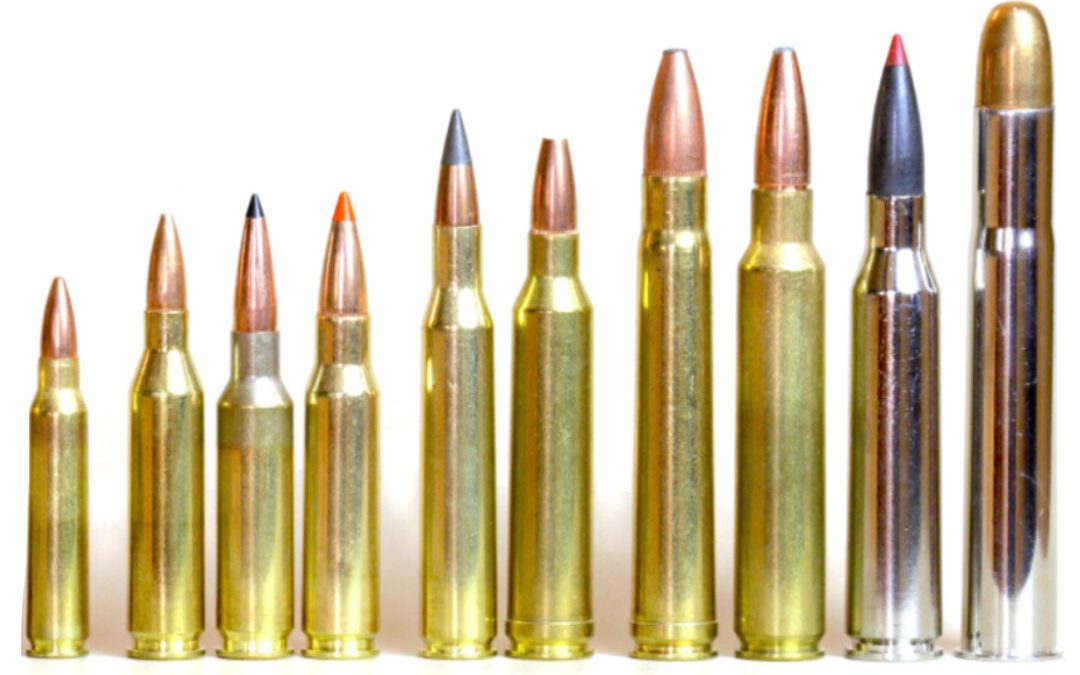The old, plodding 30-’06 Springfield, for instance, is not just yesterday’s news; it’s moldy, too, and so is anyone who hunts with one, according to millennials or whatever they call the most recent come-of-age generation. In contrast, the 6.5 RPM from Weatherby is a sleek, fast, innovative cartridge that represents cutting-edge design and performance. Anyone hip enough to hunt with this avant garde centerfire is equally cutting edge except this new, smoking hot 6.5mm is based on an elongated 284 Winchester case that has been around for 58 years! And it cranks out 140-grain bullet velocities equal to the 264 Win. Mag. of 1958.
Well, OK, but how about the equally modern, fastest-of-the-fastest 27 Nosler? Now there’s a fat-bodied, sharp-shouldered, high-volume case with a proper longer-than-caliber neck for aligning bullets perfectly straight to the axis of the bore. This is Modern with a capital M. Except the foundation for the 27 Nosler is the 404 Jeffery, an old British African cartridge first sold to the public when Theodore Roosevelt was president and Albert Einstein proposed his Theory of Relativity in 1905. That makes it a year older than the 30-’06!
Well, OK, but what about the 6.5 Creedmoor? Now here is a trend setter, truly an advanced, fully modern and vastly superior cartridge that delivers performance the likes of which shooters of yore could barely imagine—unless you count antiquated rounds such as the 6.5x55mm Swede and 6.5x57mm Mauser of 1894 that can throw the same bullets to nearly identical velocities. Besides, the Creedmoor draws heavily on a brass foundation known as the 308 Winchester, circa 1952.
The 308 Win. is so old it might as well deactivate its primer and move to a retirement village in southern Arizona.
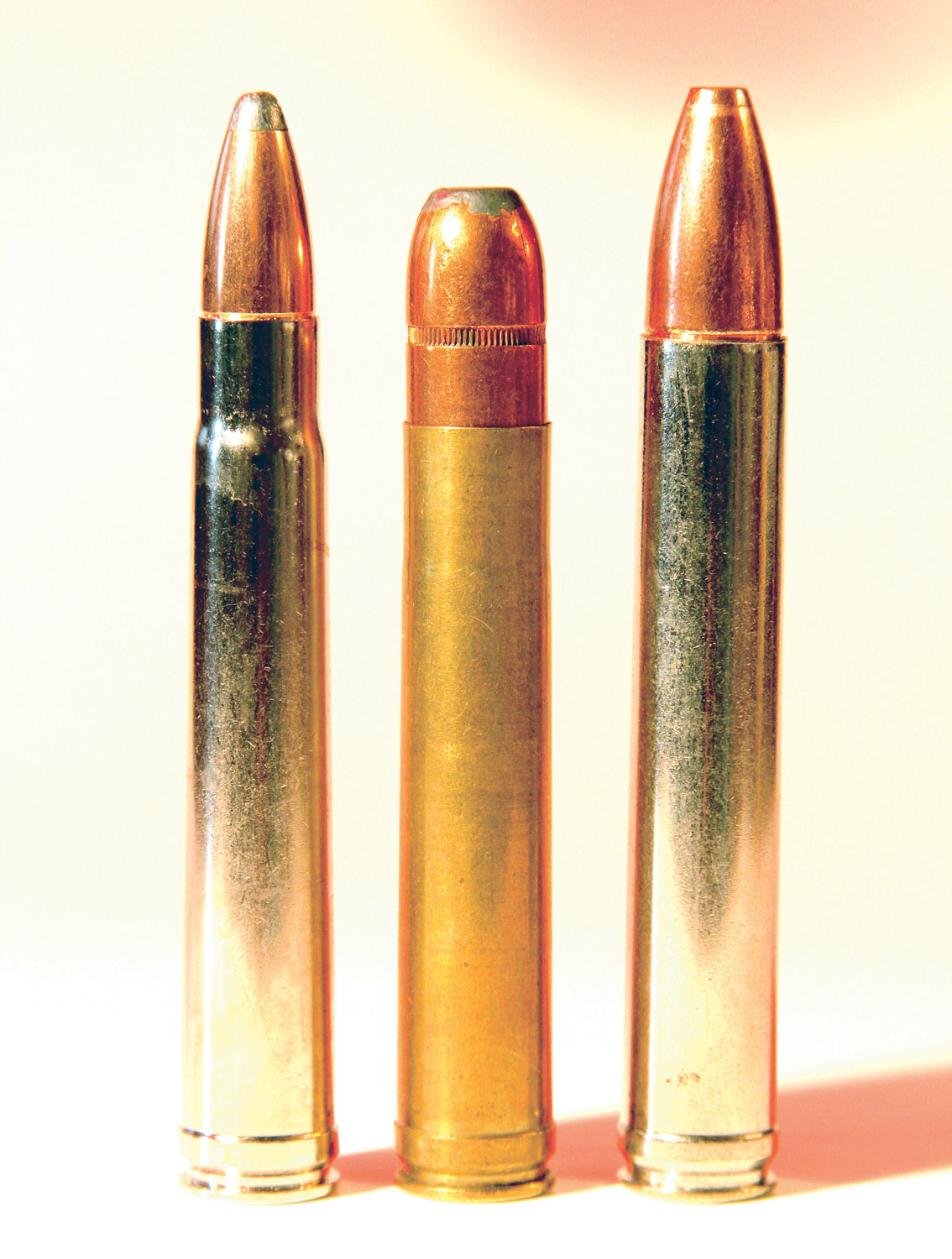
Holland & Holland’s belted 375 cartridge of 1912 (left) has been the base for a remarkable collection of other magnums including the 458 Winchester Magnum of 1958 (center) which was itself later stretched to become the 458 Lott of 1971 (right).
Details like this are fun for campfire arguments and even useful for any aficionado trying to find the optimum cartridge for addressing a 7×7, eight-year-old bull elk across a Rocky Mountain canyon at 10,737 feet above sea level on a 22-degree F October morning in a 13-mph right-to-left quartering wind.
Cartridge differences are even more fun for the companies that make and sell them. Convincing a few hundred thousand shooters that the new “29-caliber Needmoreorless” solves all the problems ever encountered with 28- and 30-caliber rounds means ca-ching, ca-ching. Money in the bank. And there’s nothing wrong with that. No hunter or shooter wants our gun and ammunition makers to stop making guns and ammunition! Besides, no one is making us buy this stuff. We grab it because doing so is fun, intriguing, educational, challenging and revealing. But….
In the world of centerfire cartridge design and performance, there is nothing truly new. In fact, our extended community of sporting rifle cartridges is like the Old Testament: begat after begat after begat. A handful of old cartridges are the foundation of most others.
Almost everyone who’s hunted deer or even paper targets has heard that the 30-’06 was necked down to make the 270 Winchester. Fewer know that it was also necked down to birth the 280 Remington. And the 25-06 Remington. And the 6.5-06. And stretched out to give us the 338-06 and 35 Whelen and….
So we might declare the 30-’06 a prototype, the founding father of generations except we’d be only half right, perhaps even only a fourth right because the 30-’06 sprang directly from the little-known 30-’03, a short-lived creation of the U.S. military. The 30-’03 was itself modeled on the 7×57 Mauser of 1892 or, more likely, the 8x57mm Mauser of 1888.
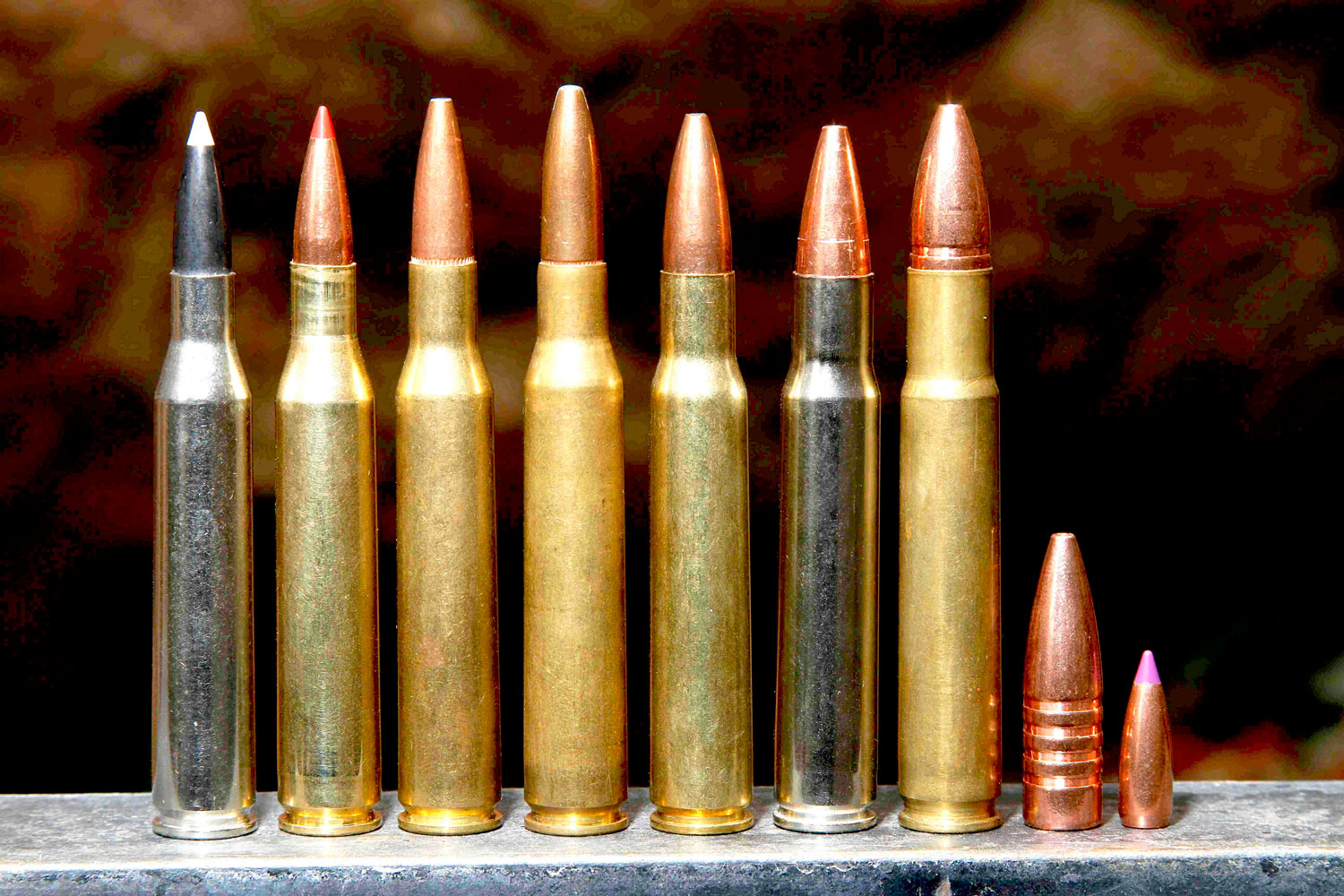
Left to right: 25-06 Rem., 6.5-06, 270 Win., 280 Rem., 30-’06, 338-06, 35 Whelen.
You can see the 30-’06/8mm Mauser family resemblance at the rim and head. All these clan members share a .473″ rim diameter and .429″ to .471″ head diameter. From there the taper, total length, shoulder slope and neck length are changed to make the extended family tree. The branches include not only the cartridges already listed, but also the 250 Savage and 300 Savage. And then there is the extensive sub-family started by the 308 Winchester, a 1952 product sprung from a blend of inspiration from the 300 Savage for length and the 30-’06 for taper.
The 308 Win. has been reshaped to give us the 243 Winchester, 358 Winchester, 356 Winchester, 7mm-08 Remington, 260 Remington, 338 Federal and 22 CHeetah wildcat. Why they ignored 25-08 and 27-08 wildcats is anybody’s guess.
While the 30-’06 and 308 are credited with the greatest number of direct descendants, the great, great, great grandfather 7×57 Mauser was minimally reshaped to give us the 257 Roberts and 244/6mm Remington. That brings the total number of commercially loaded cartridges within this 8x57mm/30-’06 extended clan to at least two dozen, probably more if you drag in European rounds.
The next most prolific foundation cartridge is the 375 H&H Magnum of 1912. Here was the first commercially successful belted magnum that set the stage for a flurry of magnums embraced by a belt around their heads. This belt did way more for marketing than it ever did for performance. The belt’s original function was to headspace the cartridge (stop it at the right distance in the chamber for proper firing pin/primer connection). The shallow, sloping shoulder of the original was feared too gentle to provide consistent and dependable headspacing. This was not a concern on virtually all other cartridges formed from the 375 H&H, but cartridge designers kept the belt because it drew attention. A magnum belt to contain magnum doses of power! Not that it did, but the misconception increases sales.
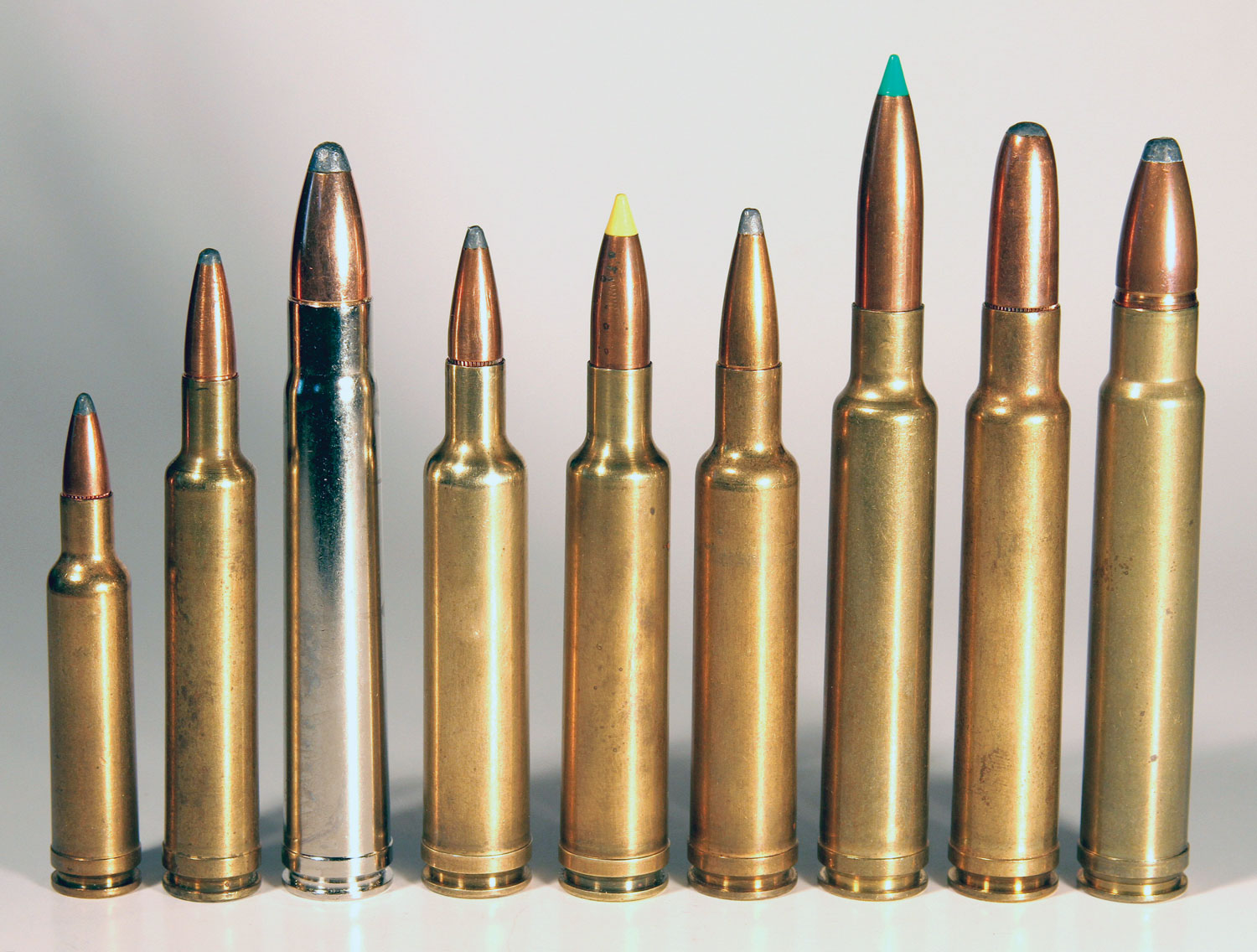
Roy Weatherby didn’t use the 375 H&H case for all his magnums, but a bunch of them. While the 224 and 240 Wbys. (left) were Roy’s own designs, he reformed the 375 H&H foundation (third from left) for his 257, 270, 7mm, 300, 340 and 375 Wby. Magnums.
Roy Weatherby ran with it, rather quickly fueling a velocity craze with his 257, 270, 7mm, 300, 340 and 375 Weatherby Magnums. Winchester caught the cue and ran with the 458, 338, 264 and 300 Winchester Magnums. Not to be outdone, Remington countered in 1962 with its 7mm Rem. Mag., a near copy of Holland & Holland’s 275 Belted Magnum of 1912 (a shortened and necked down 375 H&H. Didn’t we say there’s not much new?)
All these belted magnums, including H&H’s own 300 H&H Magnum, were either true magnum length or shortened to standard 30-’06 length to fit more affordable bolt-action rifles of the day. That didn’t stop Remington from shortening them even farther to give us the 6.5 Rem. Mag. and 350 Rem. Mag. They also went full magnum length with 416 Rem. Mag. and 8mm Rem. Mag. A few magnum length oddballs embraced the belted fraternity successfully, too. Think of the 7mm STW and 458 Lott.
By my count, the belted H&H case went on to whelp 18 commercial cartridges in the U.S. plus five more in Britain, two or three in Sweden and probably a few others I can’t think of. The H&H could be outpacing the 8×57 Mauser platform.
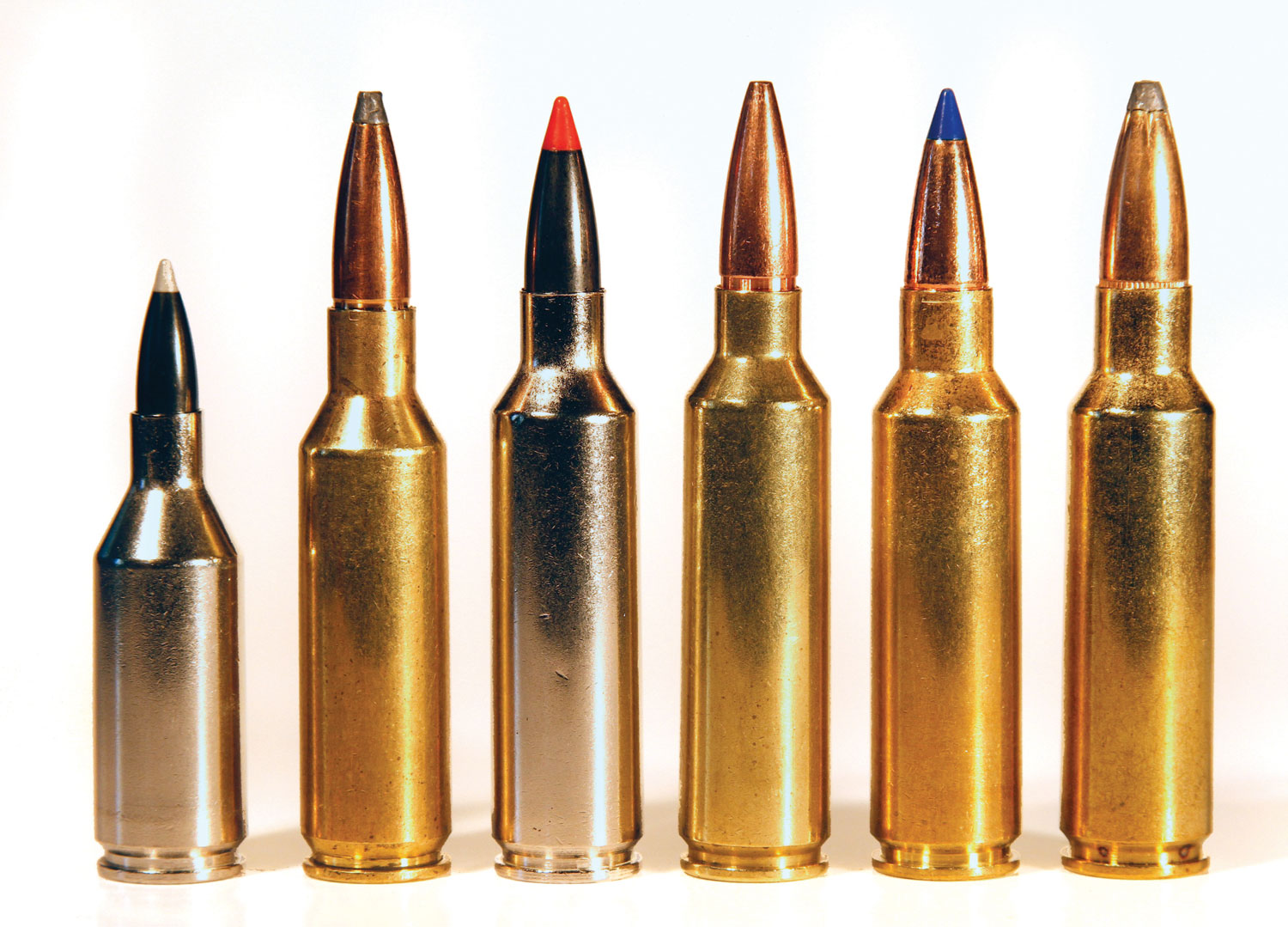
The British 404 Jeffery surely informed Winchester when that firm designed it’s short-fat magnums with nearly the same rim and body diameters as the old Jeffery of 1909. The 300 WSM was quickly modified to become the 270 WSM, 7mm WSM and 325 WSM. Remington went right to the 404 Jeffery as the parent for its Ultra Magnums, then shortened them to make its Short-Action Ultra Magnums like the 7mm SAUM (second from left.) The ultimate reduction was the 223 WSSM (far left) chopped down from the WSM parent case.
Once shooters began crowding onto the belted magnum hate wagon, yet another “magnum” cartridge began regenerating. The obscure 404 Jeffery was rescued from early retirement by wildcatters playing with the proven target cartridge ideal of a short, fat case in magnum sizes for long reach in big game hunting. Some of the earliest were the line of Dakota proprietary cartridges in 1992 in 7mm, .30, .33, .375 and .40 caliber. Remington followed with its full magnum-length Ultra Magnums starting in 1999. Winchester came nipping on its heels in 2000 with its 300, 270, 7mm and 325 WSM short-fat variations on the 404 Jeffery theme with minimally different dimensions, so technically a “new” case family. Remington counter punched with its 7mm and 300 SAUMs, shortened versions of its 404 Jeffery-based Ultra Magnums. Then things got really crazy with Winchester’s Super Short Magnums. The 404 Jeffery never before sparkled under so much limelight.
So, raise a glass to the 8mm Mauser, 375 H&H Magnum and 404 Jeffery—those three cases sired the bulk of “modern” cartridges. But take a sip in celebration of the 30-30 Winchester and 222 Remington families, too. The 30-30 truly is old-fashioned due to its rimmed case design, the standard for headspacing back in the early years of revolvers, single-shots and lever-actions. Because most early lever-actions used tubular magazines, cartridges designed for them carried flat- or round-nosed bullets, severely limiting their long-range potential. Nonetheless, most hunters well into the 20th century engaged their quarry inside of 200 yards, so rimmed cartridges with ballistically inefficient bullets remained popular. The 30-30 itself, our first commercial cartridge designed specifically for smokeless powder, was itself a modification of the 1884 38-55 Ballard (later Winchester) blackpowder round. This case with a rim diameter of .506″ and head diameter around .419″ to .422″, was rearranged to give us the 219 Zipper, 25-35 Winchester, 22 Savage Hi-Power, 32 Win. Special, 375 Win. and 7-30 Waters plus several obsolete rounds.
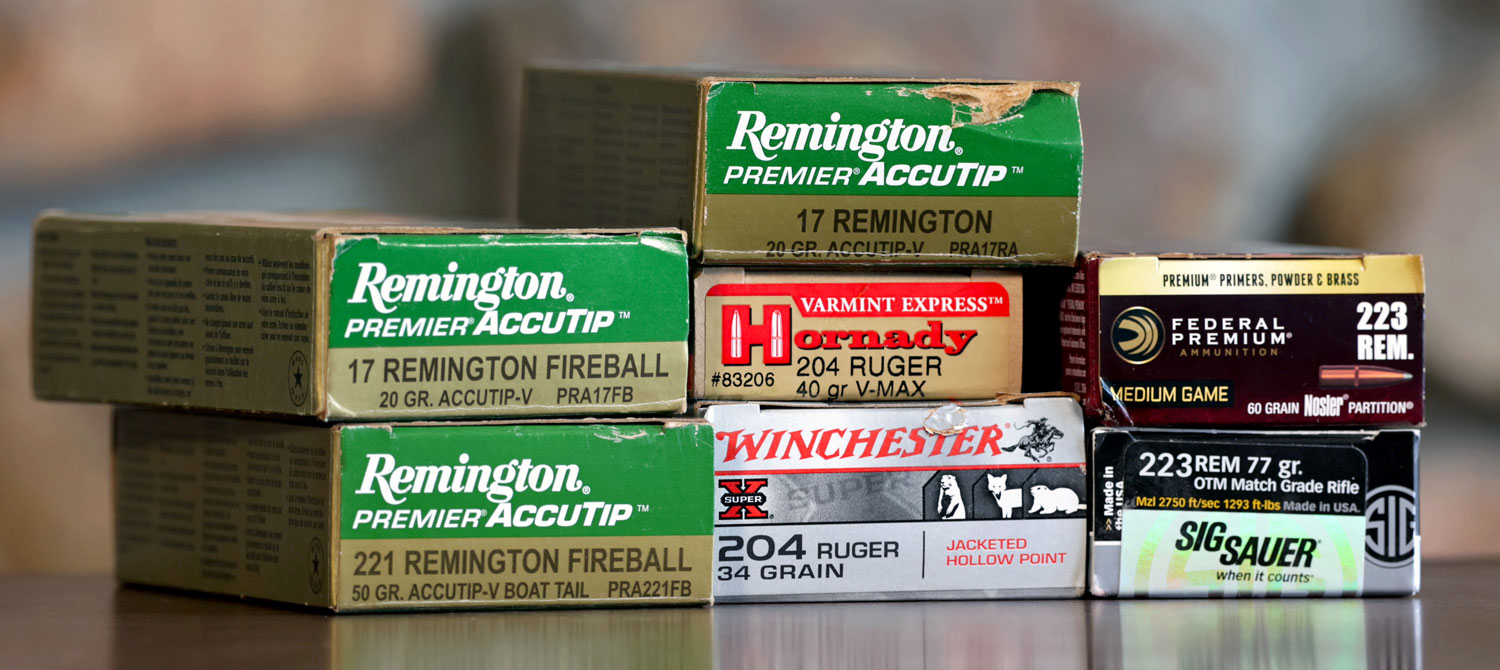
Here are five of the offspring from the old 222 Remington of 1950.
As for that diminutive 222 Remington, it was created out of whole cloth in 1950 to become one of the best balanced, most accurate, easy shooting .224s of all time. Often described as a scaled down 30-’06 (it isn’t to scale,) the 222 Rem. went on to modification as the 222 Remington Magnum, 221 Fireball, 17 Remington, 17 Remington Fireball, 204 Ruger and—king of the heap—223 Remington.
Now, if you think “modern” in modern cartridges means a 30-degree shoulder, well, the 300 Savage sported one of those at its coming out party in 1920. If you imagine a long neck is the key ingredient, the 6.5×55 Swede included a much-longer-than-caliber neck of .309″ way back in 1894. And if you’re sharp enough to look to rifling twist as the magical ingredient that makes our latest and greatest modern cartridges superior, know that the 6.5 x52mm Carcano was spinning its 162-grain bullets in 1:7.75″ of travel.
When it comes to cartridge design and performance, I can’t promise that it’s all been done before, but I certainly wouldn’t bet against it.

